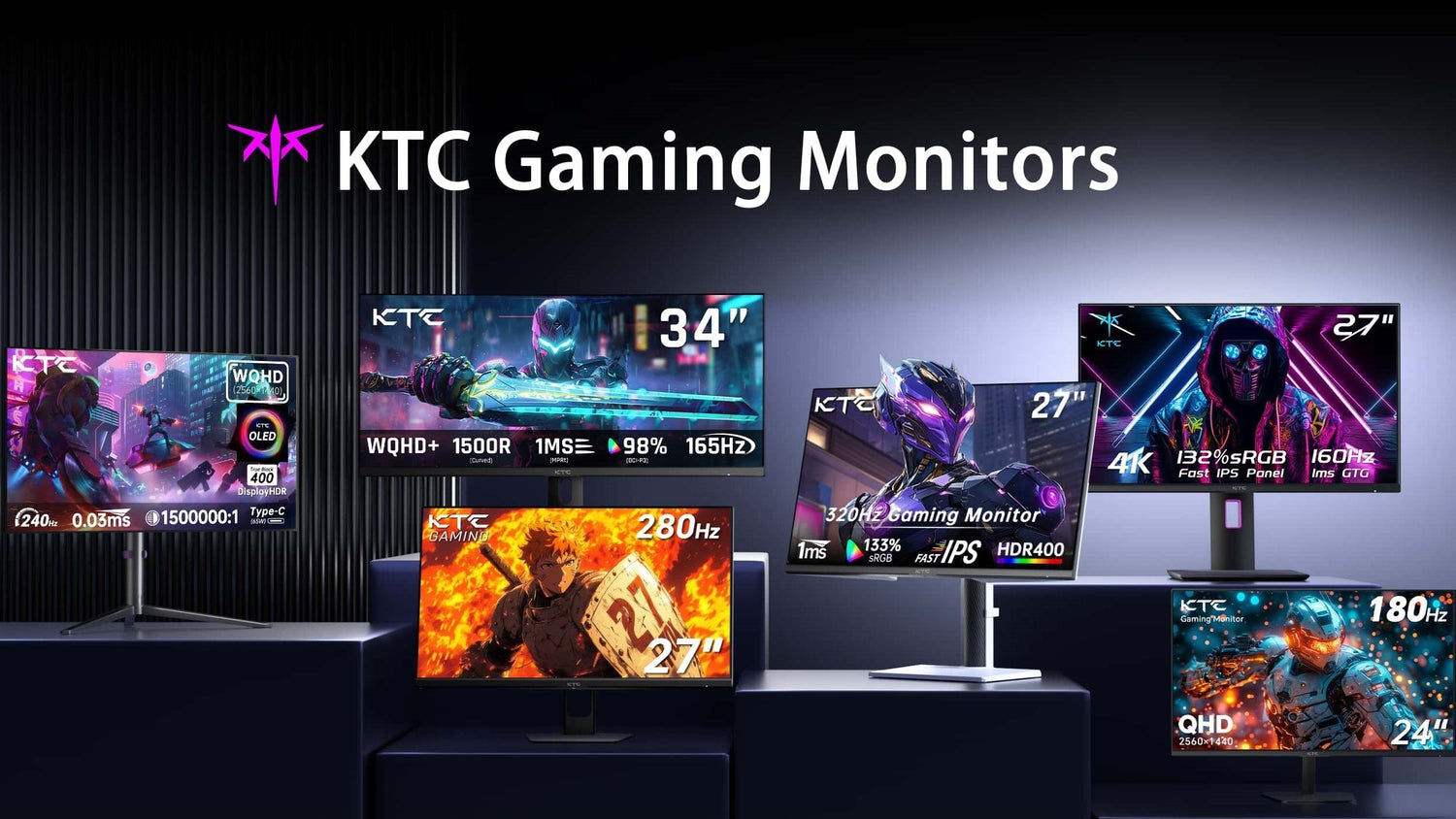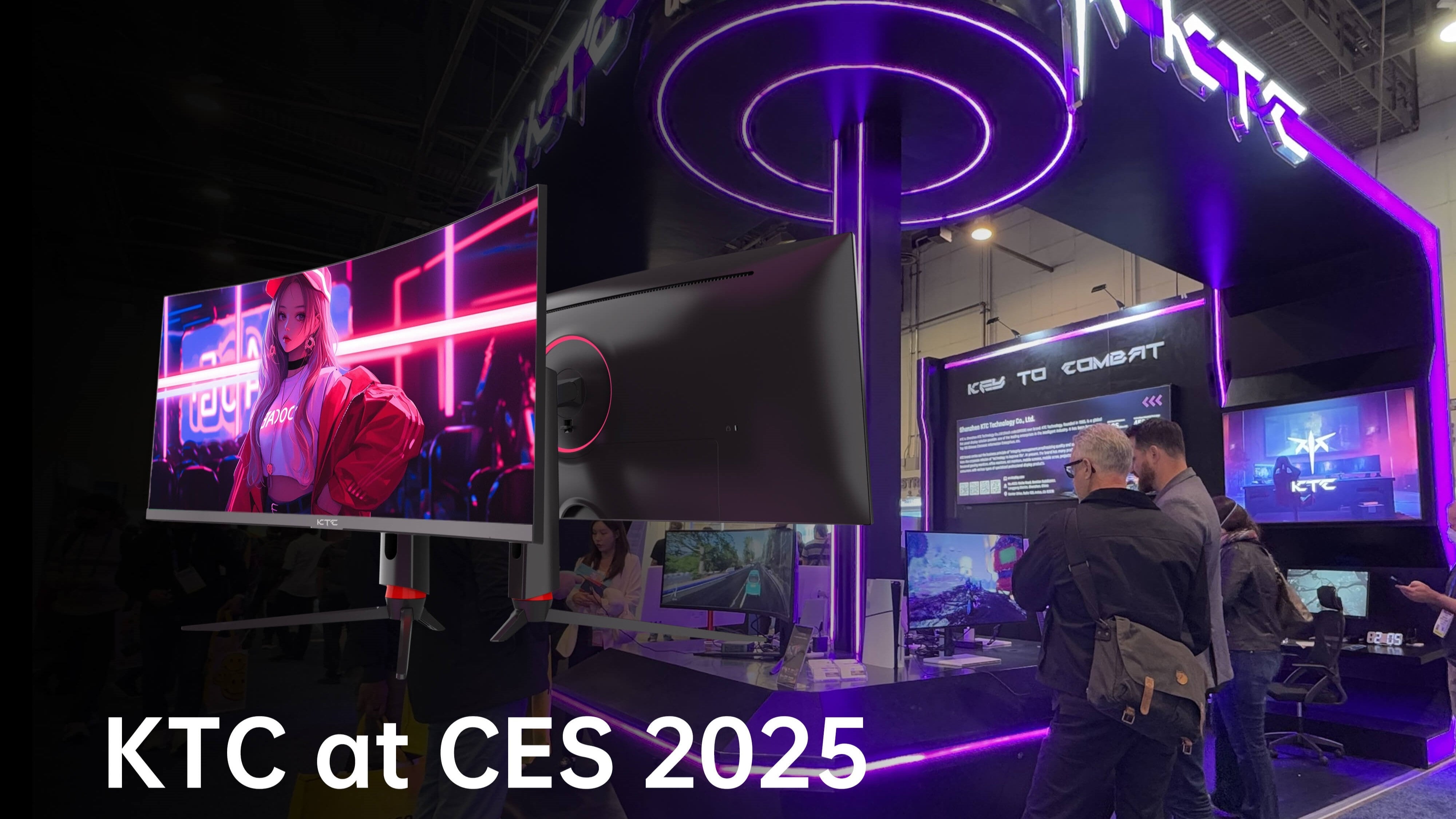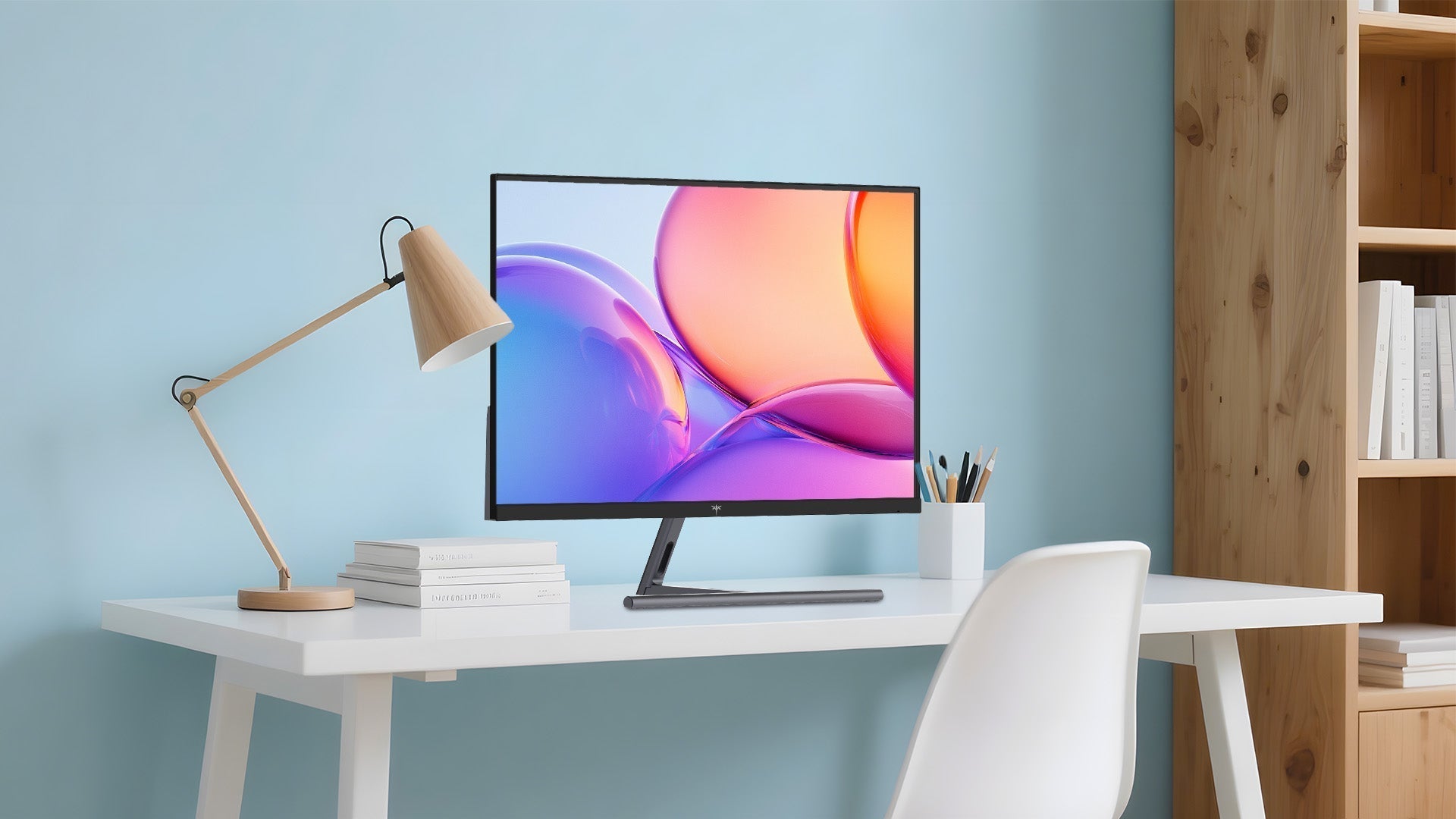It's a common mistake to pair a powerful, expensive gaming PC with an average, older monitor. All the performance from a top-tier graphics card can be wasted if the screen isn't able to display the frames it produces quickly and clearly. Your monitor is the final and most visible link in your gaming setup, directly affecting how you experience your games.
Whether you want to feel fully absorbed in a cinematic world or need the split-second advantage that comes from smooth, clear motion, the right display is essential. This guide will walk you through the important specifications to help you find a monitor that gets the most out of your PC and your games.
Three Questions to Answer Before Looking at Gaming Monitor Specs
Before comparing technical specifications, you need to answer three basic questions about your own situation. Thinking about your games, your PC, and your physical space first will ensure you buy a monitor that you'll actually be happy with.
1. What Types of Games Do You Play Most?
Your favorite genres determine which features will matter most to you.
For Fast-Paced Competitive Games: If you primarily play competitive shooters or action games, your goal is performance. You need the highest possible refresh rate for smooth motion and the fastest response time to minimize blur. Image quality and colors are less important than having a clear, responsive view of the action.
For Immersive Single-Player Games: If you enjoy cinematic adventures and detailed role-playing games, visual quality is the top priority. A high resolution (1440p or 4K) will make worlds look sharp, while excellent color performance and High Dynamic Range (HDR) will make them feel more vibrant and realistic.
For Strategy and Simulation Games: For grand strategy, city-builders, or flight simulators, screen space is key. A larger or ultrawide screen allows you to see more of the game map or interface at once. A high resolution is also very useful for keeping text and small details sharp and easy to read.
For a Mix of Everything: If you play a wide variety of genres, you should look for a balanced monitor. This means finding a good middle ground with a solid resolution, a refresh rate that provides smooth gameplay, and pleasant color reproduction, without specializing too heavily in one area.
2. What Can Your PC Actually Handle?
Your monitor should be matched to your computer's performance to avoid problems. A powerful monitor requires a powerful PC.
The most important component is the graphics card (GPU). A high-end, recent GPU has the power to run games at 4K resolution or at very high refresh rates at 1440p. An entry-level or older GPU, however, is much better suited for a 1080p monitor, where it can deliver a smooth experience. Using a budget GPU with a 4K monitor will lead to very low, unplayable frame rates. Your CPU also matters, as a strong CPU is needed to help achieve high frame rates. The goal is to create a balanced system where your PC can take full advantage of your monitor's features.
3. What Is Your Budget and Desk Space?
Finally, consider your practical limits. First, set a firm budget. Gaming monitor prices vary widely, and knowing your limit is the easiest way to narrow your options. Second, measure your desk. Make sure the monitor size you're considering will fit comfortably while leaving you enough room for your keyboard and mouse movements.
The Core Technical Specifications of Gaming Monitors
With your personal requirements established, you can now analyze the technical specifications with purpose. This section breaks down the most important terms.
Resolution, Refresh Rate, and Response Time
These are the most important specifications that define a monitor's core performance.
Resolution (Clarity):
Resolution is the number of pixels on the screen, determining the sharpness and detail of the image.
- 1080p (Full HD, 1920x1080): The baseline for PC gaming. It is the easiest for most graphics cards to run, making it a good choice for budget builds or for competitive players who want the highest possible frame rates.
- 1440p (QHD, 2560x1440): Often called the "sweet spot," this offers a clear visual upgrade over 1080p without being as difficult to run as 4K. It's a great balance of sharp visuals and high performance for mid-range to high-end PCs.
- 4K (UHD, 3840x2160): This resolution provides the sharpest, most detailed image possible. However, it requires a very powerful and expensive graphics card to run games smoothly.
Refresh Rate (Smoothness):
Measured in Hertz (Hz), refresh rate is the number of times per second the monitor updates the image. A higher number results in smoother, more fluid motion.
- 60−75Hz: The basic level, suitable for casual players or consoles that don't go above 60 frames per second.
- 144−165Hz: The modern standard for PC gaming. The difference in smoothness compared to 60Hz is significant and makes gameplay feel much more responsive.
- 240Hz and higher: Primarily for serious competitive players. This provides the smoothest motion possible, offering a small but crucial edge in fast-paced games.
Response Time (Clarity in Motion):
Measured in milliseconds (ms), this is how fast a pixel can change color. A lower number is better because it reduces motion blur and "ghosting" (faint trails behind moving objects). For gaming, a response time of 1ms (GtG) is the target.
Panel Types
The technology inside the screen determines its strengths and weaknesses regarding color, contrast, and speed.
IPS (In-Plane Switching): Offers the best color accuracy and viewing angles. Modern IPS panels are also very fast, making them a superb all-around choice for gaming and general use.
VA (Vertical Alignment): Provides the best contrast, meaning it can produce much deeper blacks than other panel types. This makes them great for playing games in a dark room, though some can exhibit noticeable smearing in fast-moving scenes.
TN (Twisted Nematic): The fastest panel type, offering the highest refresh rates and quickest response times. This performance comes at a cost: colors and viewing angles are noticeably worse than IPS and VA. It's a niche choice for competitive players who prioritize speed above all else.
Mini-LED: An advanced backlight for LCDs (IPS or VA) that uses thousands of tiny LEDs for local dimming. This creates outstanding contrast and high brightness for excellent HDR performance, rivaling OLED without the burn-in risk. Its main drawback can be minor "blooming" or halos around bright objects.
OLED (Organic Light Emitting Diode): Each pixel creates its own light, allowing for perfect blacks and an extremely high contrast ratio. They also have nearly instant response times and very vibrant colors. The main drawbacks are high cost and a potential risk of permanent image retention (burn-in).
Adaptive Sync for Tear-Free Gaming
Screen tearing is a distracting visual artifact that occurs when your GPU's frame output is not synchronized with your monitor's refresh cycle. Adaptive Sync technology solves this problem by allowing the monitor to dynamically adjust its refresh rate to match the frame rate of the GPU, resulting in perfectly smooth, tear-free gameplay. This is a must-have feature.
- NVIDIA G-SYNC: A proprietary hardware-based or software-certified solution that requires a compatible NVIDIA GPU.
- AMD FreeSync: An open-source standard that works with AMD GPUs and is also compatible with modern NVIDIA cards.
Visual Quality: Color, Contrast, and HDR
These features determine how vibrant and realistic the image looks.
- HDR (High Dynamic Range): An HDR-capable monitor can display a wider range of brightness and color. This results in brighter highlights, more detailed shadows, and more impactful, lifelike lighting in games. Look for certifications like DisplayHDR 400, 600, or 1000, where higher numbers indicate better performance.
-
Color Gamut: This is the range of colors a monitor can display. A wider gamut, such as one that covers a large percentage of the DCI-P3 space, will show more vibrant and saturated colors than a standard sRGB monitor.

Gaming Monitor Size, Shape, and Physical Features
Beyond the internal specs, the physical design of the monitor affects how it fits into your space and how comfortable it is to use. Here’s what to look for.
Screen Size
The physical size of the screen, measured diagonally in inches, impacts your viewing experience.
- 24-inch: Often preferred by competitive gamers because the entire screen can be seen at a glance without moving your head.
- 27-inch: A very popular "sweet spot" that offers a great balance of immersion and size for all types of games.
- 32-inch and larger: Provides a more cinematic, immersive experience, and the ample screen real estate is ideal for multitasking or fully appreciating the detail in 4K content.
Aspect Ratio (Screen Shape)
This describes the ratio of the screen's width to its height.
- 16:9 (Widescreen): The universal standard for nearly all games and media content.
- 21:9 (Ultrawide) and 32:9 (Super Ultrawide): These wider formats offer a panoramic view that can be incredibly immersive in games that support it. However, not all games work well with these shapes, and they are generally not used for competitive gaming.
Curved vs. Flat Screens
This is largely a matter of personal preference.
- Curved: A curved screen can make the experience feel more immersive, especially on larger and ultrawide monitors, by wrapping the image slightly around your field of view.
- Flat: A traditional flat screen is often preferred for its geometric accuracy in competitive games and is better suited for non-gaming tasks like photo editing or document work.
Ports and Connectivity
The ports on the back of the monitor determine what you can connect to it.
- DisplayPort: This is the most important connection for PC gaming. It is essential for getting the highest refresh rates and resolutions from your graphics card.
- HDMI: Also a very common port. It's great for connecting game consoles, laptops, or for use as a secondary input.
Stand and Mounting
A good stand contributes to your comfort during long gaming sessions. Look for a stand that offers adjustments for height, tilt, and swivel. This allows you to position the monitor perfectly at eye level. For maximum flexibility, check for VESA mounting compatibility, which means you can detach the included stand and mount the monitor on a separate desk arm.
Gaming Monitor Recommendations and Final Checklist
Now that you understand the key terms and features, let's connect everything to the gamer types we identified earlier. Below are some sample configurations and a final checklist to use before you buy your new gaming monitor.
Gamer Profile Recommendations
- For the Competitive Player: Look for a 24" 1080p monitor with a 180Hz or higher refresh rate, a 1ms response time, and a TN or Fast IPS panel. The focus is entirely on speed and motion clarity.
- For the Immersive Adventurer: A 27-32" display at 1440p or 4K, with a refresh rate of 144Hz or more. Prioritize an IPS, Mini LED or OLED panel for excellent colors and strong HDR performance (such as DisplayHDR 600 or better) to make worlds look their best.
- For the All-Rounder: The ideal combination for playing a wide variety of games is typically a 27" 1440p monitor with a 144-180Hz refresh rate and a Fast IPS panel. This offers a great balance of sharpness, smoothness, and color.
- For the Budget-Focused Build: A great starting point is a 24" 1080p monitor with at least a 144Hz refresh rate. Look for an IPS or VA panel and ensure it has verified Adaptive Sync compatibility (FreeSync or G-SYNC) to prevent screen tearing.
Your Pre-Purchase Checklist
Before you make a final decision, ask yourself these questions:
- Is my PC’s graphics card powerful enough for this monitor's resolution and refresh rate?
- Does the panel type (IPS, VA, TN, Mini LED, OLED) match the kinds of games I play most often?
- Does it support an adaptive sync technology (like G-SYNC or FreeSync) to ensure smooth, tear-free gameplay?
- Does it have a DisplayPort input to get the best performance from my PC?
- Does the size and shape (curved or flat) fit my desk and personal preference?
- Have I checked multiple independent, professional reviews for the specific model I'm considering?
Use this list as a final confirmation before making your purchase. A monitor that passes this check is one you can buy with confidence, knowing it is the right fit for your gaming setup.
Equip Your Battlestation with Confidence!
The perfect monitor is a deeply personal choice that hinges on the synergy between your games, your hardware, and your budget. By focusing first on your needs and then methodically decoding the specifications, you move from being a confused shopper to an informed buyer. An investment in the right display is not just an accessory purchase; it is a long-term enhancement to every single moment you spend gaming. You now know to complete your setup with the visual centerpiece it deserves.




